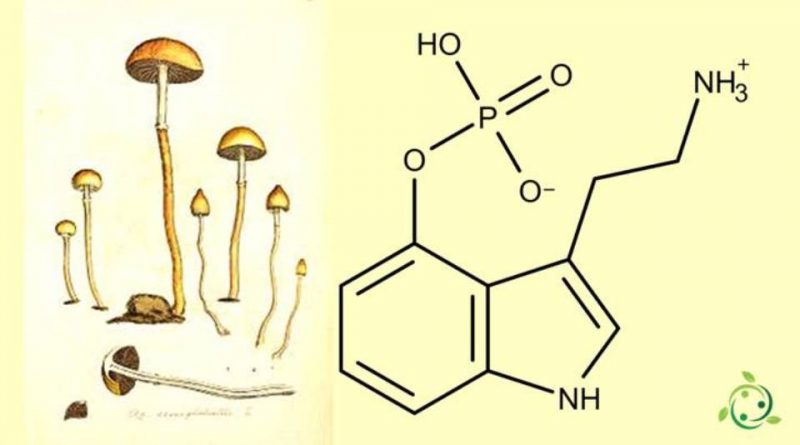Norbaeocystin
Norbaeocystin
Norbaeocystin whose term in the official IUPAC nomenclature is: 3- [2- (ammoniumethyl)] – 1H-indole-4-yl hydrogen phosphate is an alkaloid.
This substance has a brute or molecular formula: C10H13N2O4P.
From a chemical point of view, norbaeocystin is a tryptamine with a chemical structure related to that of psilocybin and even more markedly than baeocystin. Unlike the latter, it is not certain that the molecule contributes to the entheogenic effects of psilocin.
Norbaeocystin occurs naturally, in appreciable doses, in a mushroom of the genus Psilocybe (Psilocybe baeocystis Singer & A.H. Smith (1958)).
Psilocybe baeocystis is a mushroom from the Hymenogastraceae family that contains the hallucinogenic compounds psilocybin, psilocin and baeocystin.
Norbaeocystin is an N-demethylated derivative of baeocystin (itself an N-demethylated derivative of psilocybin) and a phosphorylated derivative of 4-hydroxytryptamine. 4-hydroxytryptamine is known to be a positional isomer of serotonin, which is 5-hydroxytryptamine.
Recently, researchers have shown that norbaeocystin may be an intermediate in the biosynthesis of psilocybin.5 In vitro tests have shown that L-tryptophan is converted to tryptamine by the PsiD enzyme which is then converted to 4-hydroxytryptamine by the PsiH enzyme. . PsiD can also synthesize 4-hydroxytryptamine directly from the 4-hydroxy-L-tryptophan substrate. Norbaeocystin is then synthesized by the PsiK enzyme. The researchers propose that additional methyl groups are added by the PsiM enzyme, generating baeocystin (one methylation) and psilocybin (two methylations).
Warning: The information shown is not medical advice and may not be accurate. The contents are for illustrative purposes only and do not replace medical advice.

